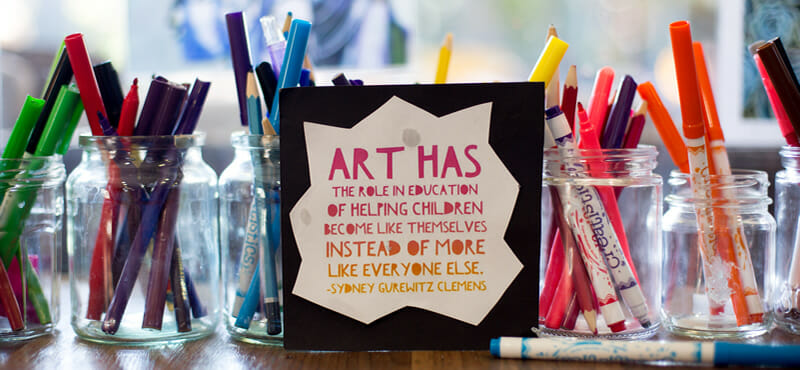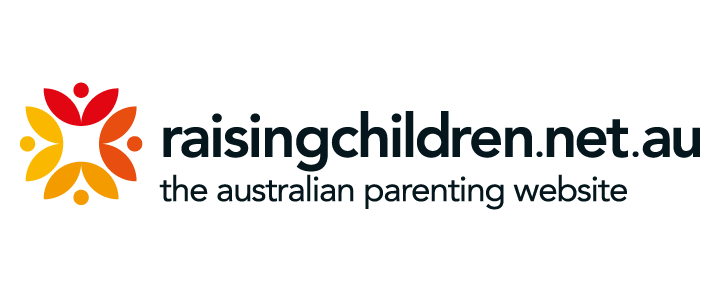
Creativity, imagination and expression through art
“Every child is an artist” – Picasso
Did you know that art isn’t just about your child creating pretty paintings and pictures, it’s so much more than that. Your child develops life skills through exploring the arts and participating in art activities. They learn to express themselves and communicate through art. It’s about creativity, imagination, exploration and discovery, and helping children to develop many skills such as:
Fine Motor Skills
Your child develops fine motor skills from using a crayon, fingers, a paintbrush or holding a pencil, to using scissors and cutting around paper to create their masterpiece. These fine motor skills help your child with writing and other small tasks such as buttoning up their clothes or tying up their shoelaces.
Communication and Language Skills
Your child will be communicating visually through their drawings and paintings as well as verbally when they explain their creation. Young children don’t usually have the vocabulary to discuss how they are feeling and art is one outlet for them to express different emotions, for example, helping them express joy, worries, sadness or excitement – this helps them to explore how they feel.
Problem Solving
Do you remember learning how to mix the primary colours to end up with pink, green or brown? How big you needed to draw a tree and still have room on the page for the rest of your drawing? Art teaches your child how to critically think and find a solution to their experiments.

Self Expression and Concentration
Watch as young children busily paint in large swirls and you see their face as they are fixated on what they are trying to achieve. Art requires memory, thinking about what they want the outcome to be, remembering an image or an experience. For example, from playtime at the park they draw a red swing with green grass and blue skies. Developing a child’s attention, concentration and memory helps with reading skills and in turn helps prepare them for school.
At St Joseph’s Family Services, we like to provide space for children to learn through their own self-expression and creative ideas and not through set outcomes. Read this wonderful poem by Helen E Buckley that presents a truly insightful example of how important self-expression can be in child development. It’s well worth reading through!
How you can help your child enjoy creativity and art (and get messy!)
It can be challenging to put time aside from busy schedules after work, picking your child up from daycare, getting dinner ready, bedtime routines etc to having to think about sitting down with your child and helping them to explore their creative and artistic side. However, consider this as quality time spent together with your child, creating wonderful memories. Here are a few tips to help:
- Keep it simple
Remember, art needs to be fun and affordable and if you make it all too hard, you won’t start an art project with your child. For sculpture or collage, use objects that you have at home like toilet rolls, boxes and egg cartons. Make sure you have glue sticks and sticky tape, paper, colouring pens, crayons and paint in the house at the ready. Last but not least, make sure you have a plastic sheet and aprons so that you can contain some of the mess! (Just watch out for the painted handprints on the walls…)
- Encourage your child’s own creativity
We often feel pressure to lead and guide our child with what they need to do. Try to let them use their own imagination and creativity as this helps them to give things a go by themselves, building on their confidence. Take the time to listen and ask open-ended questions about what they are creating and allow them space to trial and error their ideas, and that will help them to develop their innovation and problem solving skills.
- Praise your child’s creativity
As mentioned earlier in this article, remember that it’s not all about talent – it’s about the process of creativity. Tell your child what a great job they are doing, praise them for their efforts rather than the outcome. Perhaps focus on their attention to the job in hand or tell them what a great imagination they have, even with the storytelling around what they have produced. The aim is to encourage and support your child, providing an environment for creativity, imagination and learning.

St Joseph’s Family Services Programs
We like to have many open-ended opportunities for children at our centres to engage in drawing, painting, collage, sculpture and painting.
We intentionally look at famous artworks with the children. This includes indigenous artists and famous artists like Mondrian, Monet and VanGogh. We refer to the straight lines and bold primary colours used by Mondrain and the sunflowers painted by Van Gogh to see how artists draw inspiration from nature. Helping children to see the difference between straight and curved lines is also a pre-reading skill as children can then learn to differentiate a letter o (curved lines) from a letter z (straight lines). We also use other famous artworks as inspiration for the children as a springboard for their own artistic endeavours. Sometimes we paint to music as we acknowledge music and art can be expressions of our emotions and feelings.
For more information, please contact us.







Leave A Comment